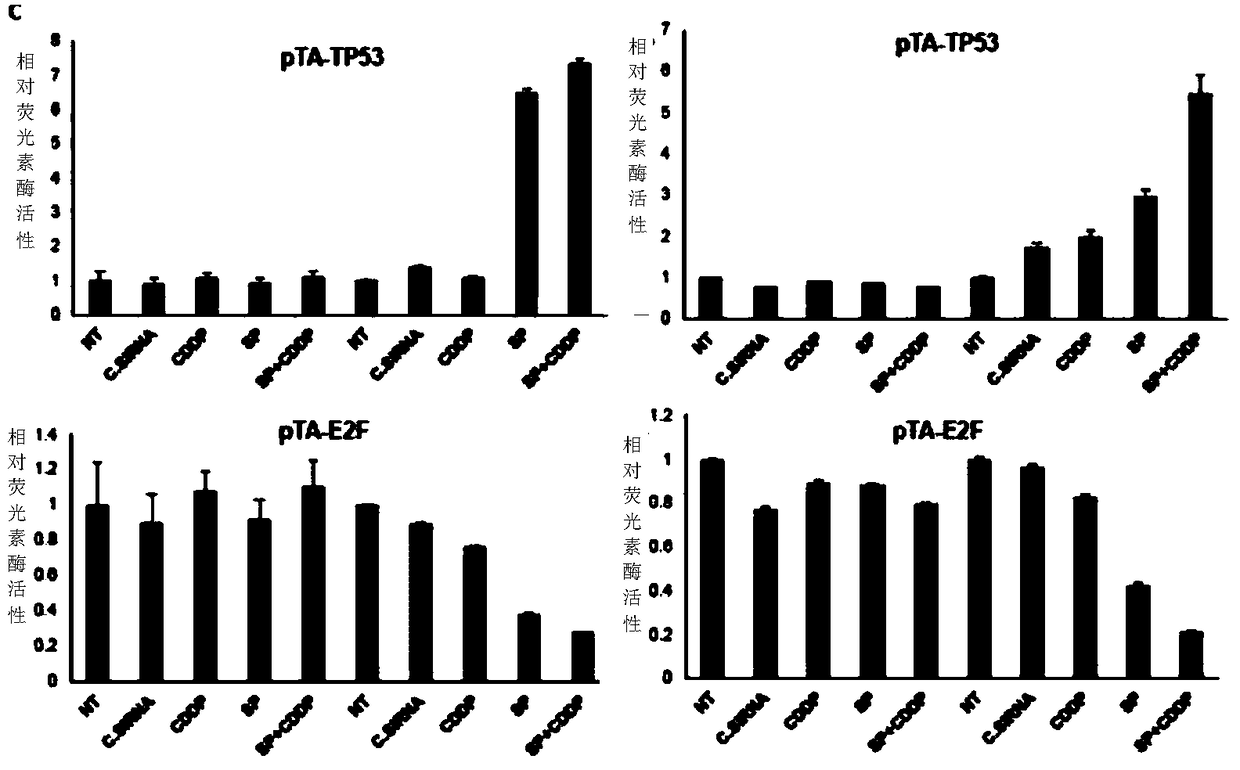METHOD FOR MAINTAINING INCREASED INTRACELLULAR p53 LEVEL, INDUCED BY PLATINUM-BASED ANTICANCER DRUG, AND APPLICATION THEREOF
一种抗癌剂、癌细胞的技术,应用在生物化学设备和方法、抗肿瘤药、医药配方等方向,能够解决不能突显顺式铂氨抗癌效果等问题
- Summary
- Abstract
- Description
- Claims
- Application Information
AI Technical Summary
Problems solved by technology
Method used
Image
Examples
Embodiment 1
[0102] Cisplatin and HPV E6 / E7 siRNA affect the effect of TP3 in cervical cancer cells
Embodiment 1-1
[0103] Effect of HPV E6 / E7 siRNA combined with cisplatin ammonia treatment in cervical cancer cells
[0104] Cervical cancer cells, HeLa cervical cancer cell line (HeLa; ATCC CCL-2) infected by HPV18 virus, and SiHa (SiHa; ATCC HTB-35) cervical cancer cell line infected by HPV16 virus by 5×10 4 or 1×10 5 The number of cells was put into a 6-well experimental plate, and placed in RPMI1640 or DMEM medium for 24 hours at 37°C and 5% carbon dioxide. The transfection of siRNA into cells was performed with the transfection reagent DharmaFect (Dharmacon, Lafayette, CO, USA) according to the instructions of the manufacturer.
[0105] In the case of Hela cervical cancer cell line infected by HPV18 virus, siRNAs of 426 and 450 sequences undergo shape-to-matter conversion individually and jointly, and in the case of SiHa cervical cancer cell line infected by HPV16 virus, siRNAs of 366, 44, and 497 sequences Transformation of shape and quality separately and jointly.
[0106] When usi...
Embodiment 1-2
[0110] Cell killing effect of cisplatin ammonia and HPV E6 / E7 siRNA
[0111] In order to confirm the effect of cisplatinum (CDDP) and HPV E6 / E7 siRNA on the viability of cervical cancer cells, the following experiments were performed.
[0112] Cervical cancer cells Hela and CaSki cells were transformed with HPV E6 / E7 siRNA, treated with 10 μM cisplatin, and cultured for 24 hours. After that, WST analysis was performed to confirm the viability of the cells.
[0113] The cell number was measured using the water-soluble tetrazolium salt (WST) method (EZ-Cytox kit; Daeil Institute of Analytical Research, Seoul, Korea). Put EZ-Cytox solution (50 μl) into each well of a 12-well experimental plate, and after incubating for 2 to 3 hours, use a GENios microplate reader (Tecan Trading AG, Wennidorf, Switzerland) to measure (485nm) viable cells.
[0114] The result is as Figure 1B As shown, compared with the non-cisplatin-treated population, the cell viability of the treated populat...
PUM
 Login to View More
Login to View More Abstract
Description
Claims
Application Information
 Login to View More
Login to View More - R&D
- Intellectual Property
- Life Sciences
- Materials
- Tech Scout
- Unparalleled Data Quality
- Higher Quality Content
- 60% Fewer Hallucinations
Browse by: Latest US Patents, China's latest patents, Technical Efficacy Thesaurus, Application Domain, Technology Topic, Popular Technical Reports.
© 2025 PatSnap. All rights reserved.Legal|Privacy policy|Modern Slavery Act Transparency Statement|Sitemap|About US| Contact US: help@patsnap.com



